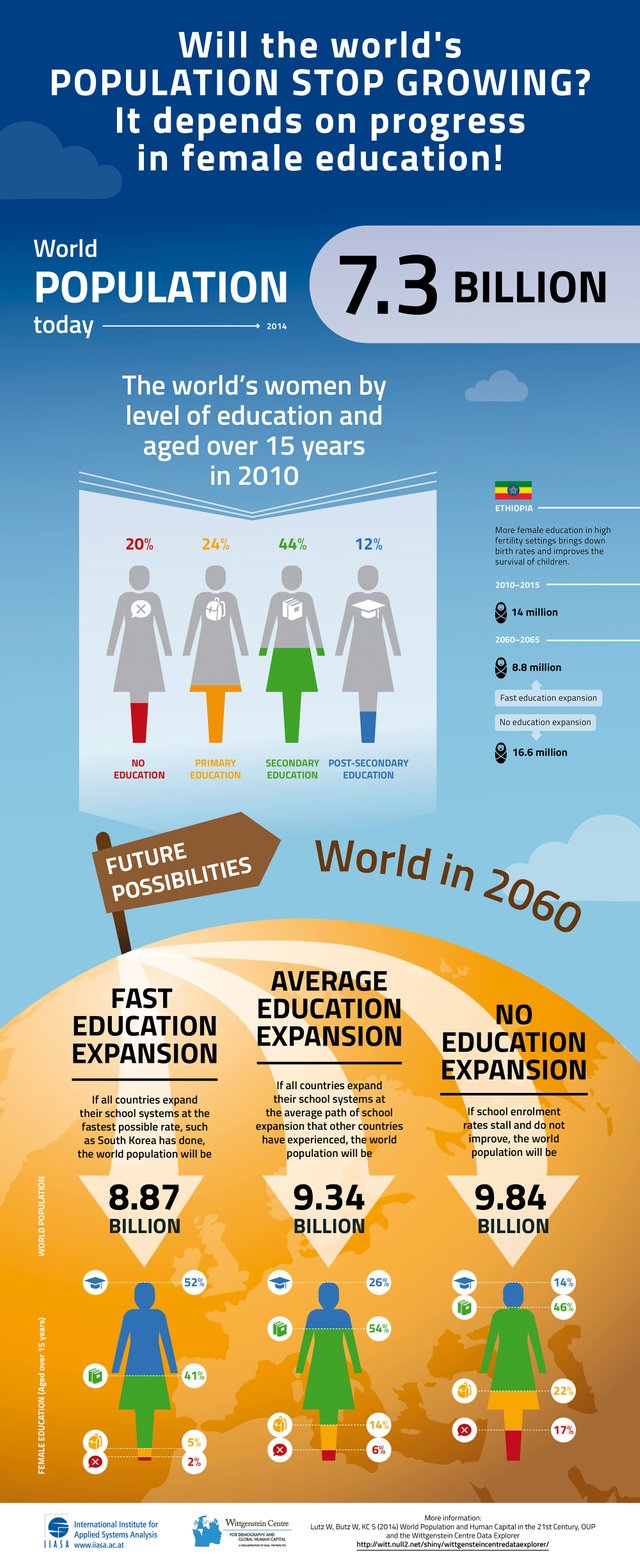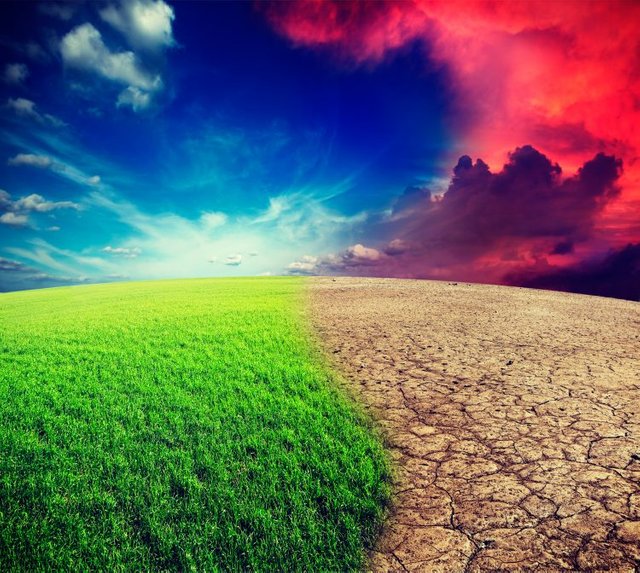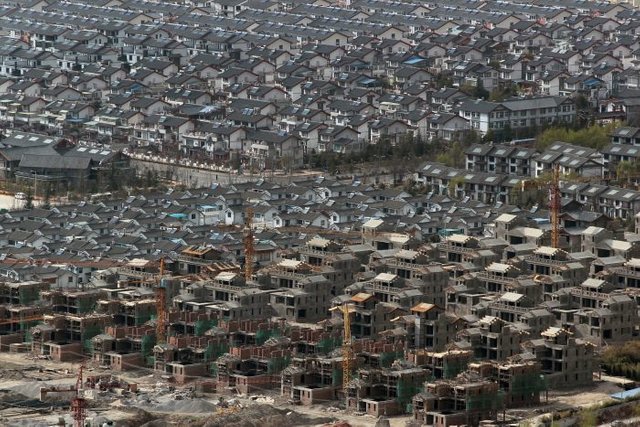The Sky Is Not Falling: Overpopulation - Coming Disaster or Myth? (Featuring @jaredcwillis as Author)

4 Billion People. That is roughly the number that a [2015 update to the United Nations' population study](https:/ (/esa.un.org/unpd/wpp/Publications/Files/Key_Findings_WPP_2015.pdf) estimates will be added to our global population this century. To put that in perspective, that is roughly equal to the current population in Asia, more than triple that of Africa, and about 13 times that of North America. All told it is more than half of our current population (7.3Bn at the time the study was performed).
By the year 2100, the UN study estimates that the world population will have grown to 11.2Bn people. Many publications and scientists have taken this data and run wild with it. There are disastrous predictions of overwhelming pollution, rampant hunger, accelerated climate change, and overcrowded urbanization taking over our landscapes.
In short, the future is not looking bright for our children and grandchildren.
Is it all gloom and doom?
The UN study, though often the most quoted, is not the only source of global population estimates. A study performed by the IIASA (International Institute for Applied Systems Analysis) in 2014, has different findings. Basing their estimates on the input of over 550 experts, the IIASA findings take into account a larger variety of factors than the UN study. The key factor being education levels.
While both studies' findings reveal large population growth in underdeveloped countries and demographics (largely in Africa and Asia), the IIASA study additionally predicts rising education levels among these demographics.
Taking this into account, the IIASA study predicts (more accurately than the UN study) that the world's population will grow to 9.4Bn by 2070 and will actually decline to 9Bn by 2100.
Is that possible? And, more importantly, is that still too high?
The 3 major factors that are posited as stress points in an overpopulation scenario are: Food, Water, and Climate Change.
- Food
According to a study published in the Journal of Sustainable Agriculture, we are currently producing enough food to sustain 10Bn people. What about the 1Bn people who are going hungry every day? According to the study, "Hunger is caused by poverty and inequality, not scarcity. For the past two decades, the rate of global food production has increased faster than the rate of global population growth."
What is the solution? According to the study, "...agroecology and locally-based food economies (rather than the global market) [are] the best strategies for combating poverty and hunger." And "Raising productivity for resource-poor farmers is one piece of ending hunger, but how this is done—and whether these farmers can gain access to more land—will make a big difference in combating poverty and ensuring sustainable livelihoods."
- Water
According to a study conducted by the International Water Resources Association, population growth is a direct driver of our ability to collect fresh water; and, in fact, has "...led to a nearly seven-fold increase in freshwater withdrawals [since 1900]." By comparison, our population, at the time of the study, had grown four-fold.
- Climate Change
This one is perhaps the most terrifying of all, because according to most studies there is a direct correlation between population growth and increased carbon emissions. The good news, is that a child born in highly-developed countries will produce higher carbon emissions over its lifetime than that of a child born in an underdeveloped country. This is good news because fertility rates in well-developed countries are continuing to drop, while fertility rates in underdeveloped countries are projected to spike.
None of this takes into account our continual (albeit slow) development and adoption of more sustainable sources of energy, future innovation in technology to cope with or mitigate climate change, and increasing urbanization in highly-developed countries (which lead to lower emissions).
What is the solution?
All of the studies agree, the driving factor of overpopulation is fertility rate. If the global fertility rate lowers to levels seen in developed countries, the world's population will be much more sustainable. According to a report by Norwich University, the current world fertility rate is 2.88 children, and a drop in just .5 would reduce our population to 6Bn by 2100.
The two key levers in lowering the fertility rate are education and poverty.
Education levels, specifically among women, are highly predictive of fertility rates; with lower fertility rates associated with higher education levels. Higher education levels lead to innovation, which is especially needed in the fields of agroecology and medicine. Better education will also allow for better economic opportunities and help to alleviate poverty.
These factors play a large role in the use and availability of contraception, which, of course, directly affects fertility rates. A study performed by the UN Population Fund in 2015, found that 12% of the global population had an unmet need for contraceptives and family planning. In other words, 12% of the population (largely concentrated in poor countries) do not have access to contraceptives that they would use if they could.
This graphic, produced by the IIASA shows population estimates as a function of female education:

Conclusion
In order to ensure a brighter future, more developed countries have a responsibility. We need to continue to contribute to higher education and greater availability of resources in poor countries. These contributions need to be different from past contributions. The focus needs to be on sustainable growth and not handouts. Business incubation programs, educational programs that give individuals the knowledge and the tools to create their own success, and agricultural programs that assist communities in developing sustainable food and water supplies. The old saying, "give a man a fish..." (you know the rest) rings true. It is not enough to donate old shoes, clothes and canned goods. While these programs do alleviate immediate needs, it creates a dependence on external supply rather than an ability to produce necessities.
The good news is that the situation is not as dire as the headlines would have you believe. We are already heading in the right direction. Fertility rates are continuing to drop, and new innovations are continuing to propel our global population towards higher education and more sustainable technology.
Additional Resources
IIASA Study Methodology and Explanation
https://blog.iiasa.ac.at/2014/09/23/9-billion-or-11-billion-the-research-behind-new-population-projections/
BBC Article - How Many People Can Our Planet Really Support
http://www.bbc.com/earth/story/20160311-how-many-people-can-our-planet-really-support
UN Population Division Resources
https://esa.un.org/unpd/wpp/
FAO - How to Feed the World in 2050
http://www.fao.org/fileadmin/templates/wsfs/docs/expert_paper/How_to_Feed_the_World_in_2050.pdf
National Geographic - A World With 11 Billion People
http://news.nationalgeographic.com/news/2014/09/140918-population-global-united-nations-2100-boom-africa/
If you like this post, be sure to check out my other work and follow me: @jaredcwillis. For more posts like this one take a look at: The Sky Is Not Falling: Why Billionaires Really Invest In Gold
Don't forget to follow @jaredcwillis!!
@crazymumzysa features authors to promote new authors and a diversity of content. All STEEM Dollars for this post go to the featured author.





Great stuff. On your link to fossil fuels, taking a meta view I understand a significant factor on the population explosion over the last 100 years is the increase in total energy that hydrocarbon exploitation has put into the human system. Like agar on a petri dish it has supercharged global agriculture, transport, distribution, communication. Allowing us to sustain ourselves at an artificially high rate. A correction is long overdue, and climate change is the kicker.
I was going to point this out. The human population is fairly flat to linear until a bump at coal discovery and start of the industrial revolution. When oil and its uses is discovered the population goes positively vertical. When oil goes down or away it's reasonable to expect that population to come down proportionally, albeit technological advices mean not all the way down
Do you believe that Climate change will have any impact on Overpopulation?
One hypothesis is that as the earth warms, population densities will significantly increase closer to the poles. (As long as food is sustainable)
That is an interesting theory, one of the things that I came across when researching this article was an entire discussion on our ability to adapt to climate change. I strongly believe that humanity, regardless of what ends up happening to the climate, will have the ability to adapt and survive. Utilizing the poles could be part of that. Additionally, we are beginning to look outward from earth and identifying planets that are potentially habitable!
Of course it will. The migration of populations will generally be away from the equator, but even there will be problems with unusual storms and flooding. It will be decades and centuries before the specific migration trends will be known, but death and famine are sure to come along with it.
I think the best way to see any improvements to our lives around the globe is to limit government power and give the money back to the people.
Government is the cause of the problem....any problem.
Reducing government is the solution to any problem..
Interesting information, Crazymumzysa. And what city is on the last picture?
That city is a chinese suburb.
Endless.. . I am shoked)
Very interesting. It's hard to believe that there will be that many people on the earth by 2100.
One of the driving forces for increased usage of robots (despite, what one could imagine as being increased resistance by the workers), could turn out to be that they produce less greenhouse gases. If they end up doing a big chunk of our work, maybe we won't need so many factories churning out greenhouse gases?
I watched a programme recently on UK TV about some genius guy who realised that overpopulation would cause children to needlessly die, and so came up with a virus that basically killed people off. I do wonder if the Zika virus is a watered-down version of that. It could conceivably spread more because of the Olympics that we've just had, and the Paralympics that we're about to have.
And climate change? We've got all that to come. We're seeing records go left, right and centre, and this is only the start. I can conceive of monster tornadoes and hurricanes and floods as a norm. This is the problem with economies that are valued through money. We've seen this happening now for 50 years (compare the release of Carbon Dioxide into the atmosphere with global temp increase....it runs virtually parallel), yet we've continued following the dollar/pound/yen/whatever. I suspect that we'll end up paying more through weather/climate change damage than we ever would've done through tackling climate change. And how come people don't see the jobs of the future (if the robots haven't taken them) are in renewable energy? Why aren't we doing something now? Sorry, if I changed the focus slightly here, but in a way, you could argue that it's about virtually the same thing, in the end, survival of the population of the earth
warming oceans releases CO2.
Really surprised that no-one watch this or commented on it. It's well worth a watch
Direct humidification distillation machines - water problem solved.
check it out this invention is over 8 years old:
Wow, I can't believe I'm voting twice for an article of yours in one day! Good job on such an important issue that so many hardly ever dare to talk about or dare to look into in the first place. Thank you for the information shared with us and namaste :)
Thanks for the vote!
great post @jaredcwillis
@crazymumzysa...check out my posts and see if you want to feature me...i would love to be. thanks
The good news is that the situation is not as dire as the headlines would have you believe.
Personally, I think that massive changes in the weather we are seeing are quite frightening. This shows a system that is undergoing big changes. The weather records are being seen left, right and centre, on a regular basis. This suggests a system that is undergoing major changes which has implications for crops, islands, cities near the sea. There 's a long list.